
Winter Preparedness: Are You Ready?
Written by Marybeth Luczak, Executive Editor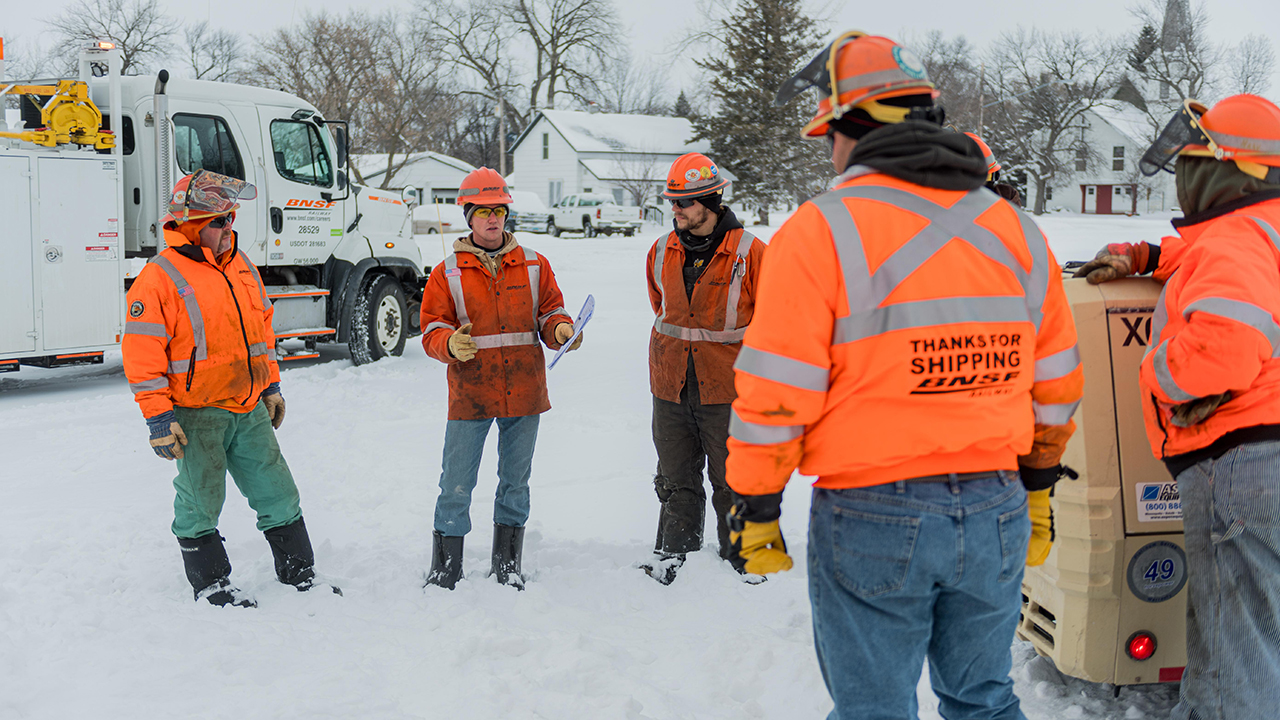
Every year, BNSF starts working on its winter action plans long before the first freeze. (BNSF Photograph)
RAILWAY AGE, AUGUST 2023 ISSUE: Railroads and suppliers share strategies and the latest tech for combatting cold climate challenges.
To reduce risk and keep traffic and riders moving safely this winter, it’s never too early to start planning, railroads and suppliers tell Railway Age. Below, BNSF and Patriot Rail outline how they approach the cold weather season—from preparing personnel and equipment to having the right resources in place—and 10 top suppliers review their newest technologies plus offer maintenance tips.
“BNSF remains committed to operating a reliable network despite the challenges that come with winter operations, such as extreme cold, blizzard conditions and ice storms,” says Kendall Kirkham Sloan, Director of External Communications for the Class I railroad that spans 32,500 route-miles in 28 states and three Canadian provinces. “Every year, BNSF starts working on its winter action plans long before the first freeze.”
In the spring, it covers what went well and what could be improved, and all 10 operating divisions refine their winter action plans. Patriot Rail operates similarly.
“After every winter we have a debrief/re-evaluation of how well we did and adjust accordingly,” says Jerry Hall, Chief Operating Officer of the holding company that runs 31 short line and regional railroads nationwide. Adjustments have included integrating winter preparedness into new operating-employee training, ordering winter supplies early, and establishing a more formal notification process of approaching winter storms and resource mobilization.
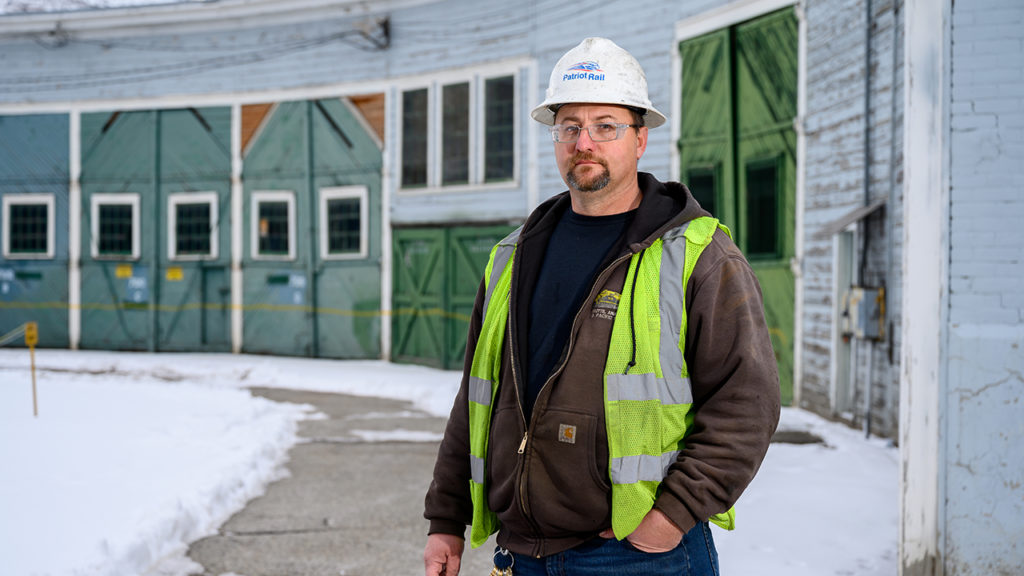
“Plan early, stock early and communicate as frequently as possible. No potential weather condition is too small to escalate. The goal is to provide safe and superior service in all weather conditions.” —Matt Mavrinac, Patriot Rail Operations Manager, Butte, Anaconda & Pacific Railway (Montana) (Patriot Rail Photograph)
“Having an adequate inventory ensures our sites are fully prepared, so we order supplies like ice melt months in advance,” Patriot Rail AVP Safety, Regulatory and Sustainability Harrison Roughton tells Railway Age. “We also designate back-up locations at nearby properties so we can quickly shift additional supplies and resources in case of unexpected storms.”
Employees are top-of-mind. Patriot Rail supplies PPE, such as pullover spike boots to boost traction, and holds multiple safety calls and performs safety contacts with field personnel related to walking conditions, proper winter attire, and “taking the safe course of action,” he adds.
Another important component of the holding company’s winter planning is equipment readiness. According to VP Engineering Scott Bannwart, all equipment is fueled adequately, snow tires are installed on highway-drivable vehicles, and proper tire pressure is set across the rubber-tire fleet. Patriot Rail also conducts a full inventory of chains, slings, chainsaws and other critical equipment so it’s ready to go.
“We use antifreeze in our locomotive fleet during winter, and stock extra wiper motors, blades, bulbs and other equipment,” adds Patriot Rail AVP Mechanical Tom Tozzer. “Last year, we installed plug-ins for our locomotive fleet at a critical location on our Butte, Anaconda & Pacific Railway in Montana to avoid a 36-mile round trip during freezing weather.”
BNSF’s engineering and mechanical departments invest in a variety of technologies to keep freight moving. This year, engineering will deploy a new rail-bound plow from Midwest America, as well as additional Thermon Hellfire Switch Heaters. The department will also continue pre-positioning snow removal equipment at strategic locations in advance of predicted significant weather events.
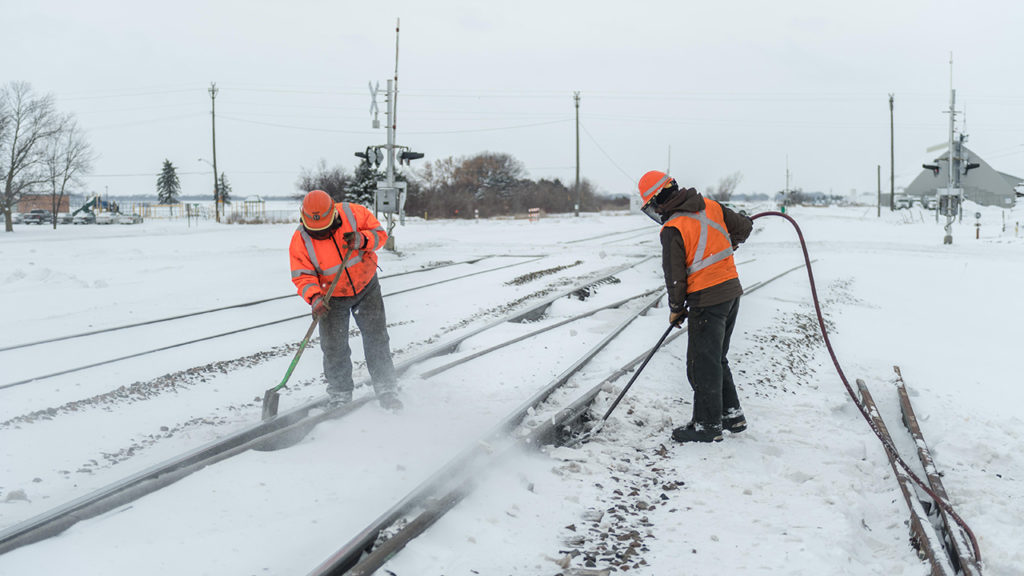
Mechanical continues to invest in locomotive winterization, which Kirkham Sloan says is primarily focused on air reliability (valves, horns, heat tape and air dryers), and in preparing the car network to maintain airflow during extreme cold temperatures.
“We maintain strong relationships with all our vendors to brainstorm better ways to keep trains moving during the most severe winter weather,” she says.
BNSF also partners with the National Park Service and coordinates with local, state and federal agencies to improve avalanche prediction and when necessary, risk mitigation. And to help provide the most up-to-date weather information to the operations department and employees in the field, it teams with AccuWeather Enterprise Solutions.
Kirkham Sloan tells Railway Age that BNSF will set up “command-type centers” when weather events warrant it to oversee the deployment of additional personnel and resources. Additionally, the railroad has teams of Mechanical Rapid Responders, who are trained to resolve car and locomotive issues 24/7 no matter the season. Engineering Rapid Responders are available to perform round-the-clock snow removal and track inspections to ensure the network’s safety.
At Patriot Rail, the safety department “continuously monitors weather patterns and communicates with the field to assist in planning,” Harrison Roughton reports. “In the event of severe weather, it is a ‘all hands-on deck’ call with local managers and operators to prepare. Storms and trajectories are monitored weeks ahead and properties that in the path are brought in early and often to discuss mitigation strategies. As storm trajectories become clearer, those properties no longer in the path are shifted to standby status to help sites in the trajectory, if needed.”
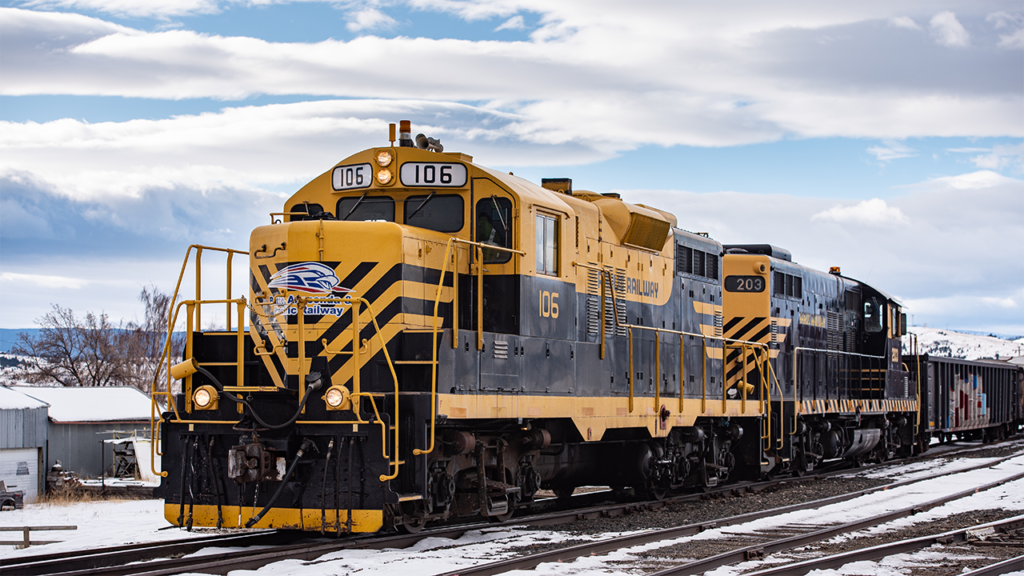
“Employee safety is our number one priority,” Jerry Hall stresses. “When we start planning for impending bad weather on our operation calls, our decision to operate comes down to whether it is safe for employees to not only arrive to work but also return home safely.”
BNSF and Patriot Rail also work with interchange partners and shippers to avoid congestion during the winter season.
“Historically, significant weather issues resulting in bunching or delayed freight is discussed well in advance and a temporary operating plan is enacted to avoid or lessen customer impact,” Patriot Rail VP Operations David Bevins says. “Being nimble and having open, early and frequent communication are the keys to avoid congestion.”
At BNSF, dispatchers work daily with other railroads to coordinate the interchange of freight from network to network. “When we know a front is moving in during overnight hours, we move as much volume as possible during the day,” Kirkham Sloan notes.
“Operating in severe winter weather requires collaboration and teamwork,” Kirkham Sloan sums up. “All our employees, contractors, the local community, and state snow removal crews work closely together to help each other during major events. At times, we have helped our employees get to and from their homes and have offered meals/lodging close to terminals for those who live too far away to get home safely. We will continue to find ways to keep our people safe and move our customers’ freight.”
Frauscher Sensor Technology USA Inc.
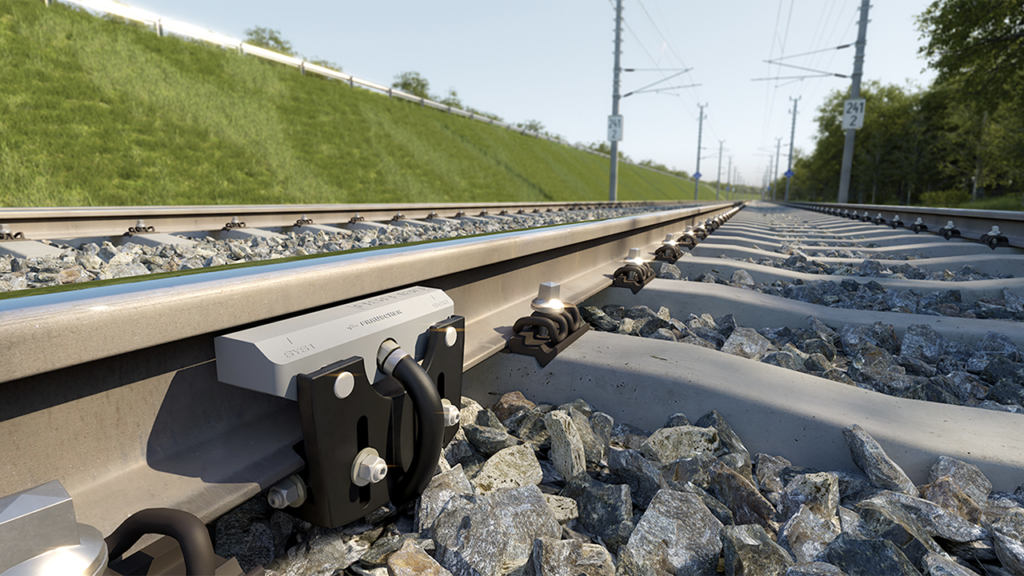
Frauscher offers wheel sensors that are rated for operation in a wide range of temperatures, and are not reliant on shunting to function. “In addition to increasing the safety of signaling and grade crossings systems with consistent reliability, use of Frauscher wheel sensors for triggering trackside equipment, such as AEI readers, hot bearing detectors and vision monitoring systems, keeps these crucial pieces of equipment functioning throughout the difficult winter months,” Executive Director Michael Parzer tells Railway Age.
Two transit agencies in Alberta, Canada recently integrated Frauscher’s wheel sensors and axle counters into their networks. One is using the axle counters for primary signaling, with an emphasis on train detection at grade crossings. The other worked with the supplier to target the negative effects of road salt on the performance of grade crossing island circuits, according to Parzer. “Both transits have experienced improved performance, including increased availability and uptime,” he says.
The company also provides train detection solutions for vital and failsafe operation, as well as for non-vital applications. Based on customer requests, the Frauscher Track Vacancy System (FTVS) was recently developed for yard applications. Testing at Class I’s over the past six months has yielded excellent results, according to Parzer.
Hotstart
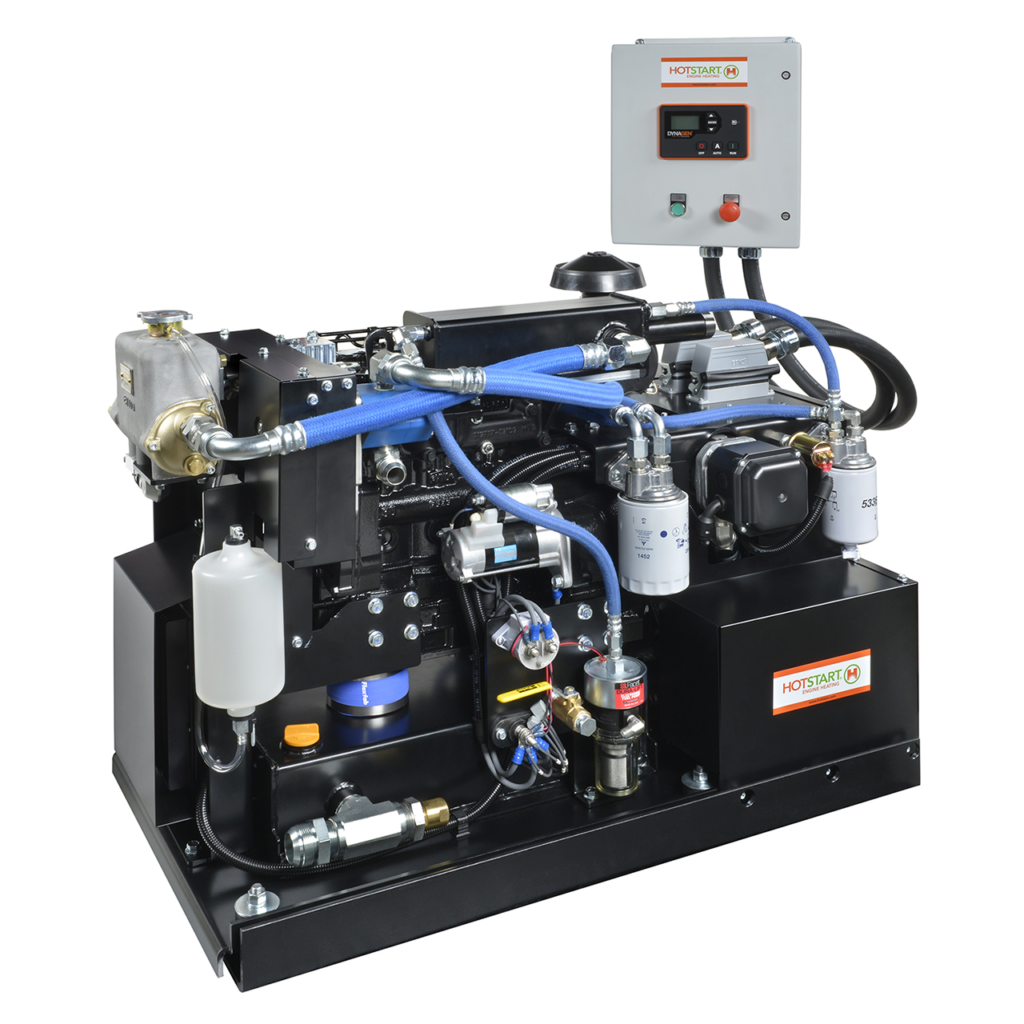
Hotstart offers a variety of products for locomotive idle reduction. The APU5 line runs off the onboard locomotive fuel supply to provide coolant and oil heat, battery charging, and cab heat without the need for shore power, according to Michael Mustradi, Market Manager-Railroad. The company also supplies shore power systems and battery chargers.
Hotstart products help to not only save fuel, Mustradi tells Railway Age, but also decrease the number of restarts on locomotives equipped with AESS (Automatic Engine Start/Stop), limiting engine wear and tear.
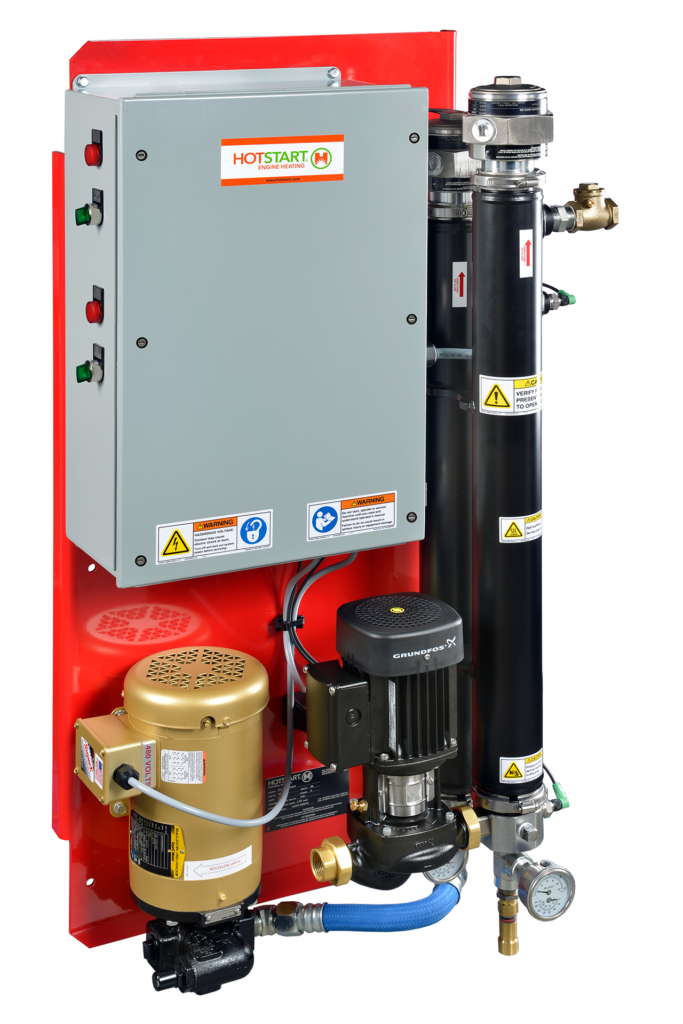
Hotstart encourages customers to plan well before cold weather arrives. “[W]e recommend customers ensure new equipment installations are done properly, perform any needed maintenance on existing equipment, replenish common replacement parts, and train appropriate personnel,” Mustradi says. For financial preparedness, he adds, “it is important to research available federal and/or state funding opportunities. Most of the available funds today are allocated for infrastructure needs, however there are funds set aside for reducing emissions.”
He reports that a number of customers have secured local/state/federal grants to install EPA “SmartWay”-verified Hotstart equipment. Government funding, through the Diesel Emissions Reduction Act, also helps railroads procure idle reduction technologies, he adds.
New York Air Brake (NYAB)
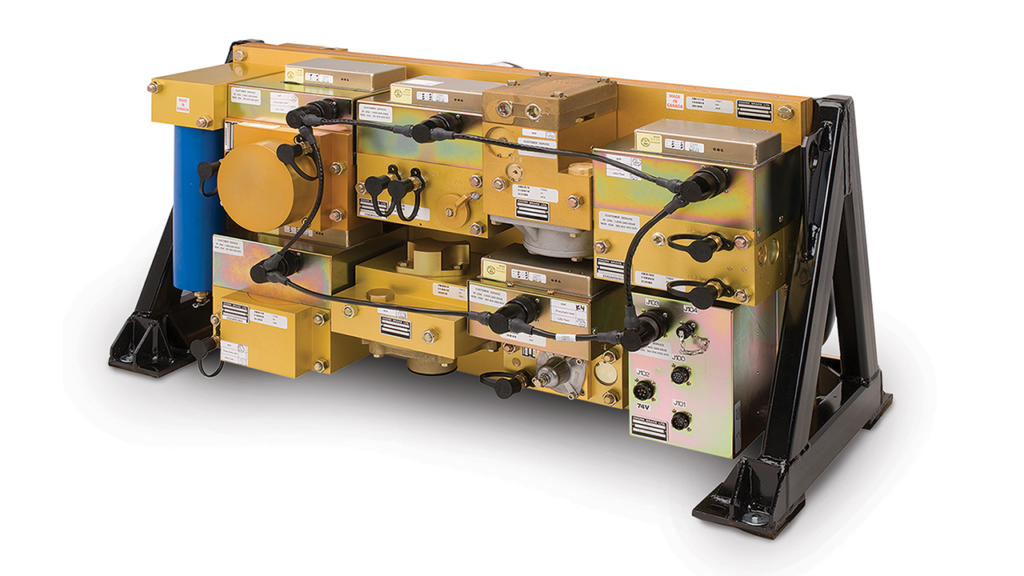
NYAB subsidiary Snyder Equipment offers the PistonSupply Eco VV1000-T® Oil Free Compressor and the DrySupply Smart Max LD-1000® Air Dryer with three-stage filtration system to ensure freight train brakes perform reliably in all weather conditions. “In the wintertime, there may be less water to compress out of the air, but there’s still enough to do damage if you don’t remove it properly,” says Michael Stroder, Product Line Manager for Snyder. “And the stakes are higher because of freeze ups. So, it’s important that all the systems along the line that remove water are operating properly. That includes the water separator in the VV1000-T compressor, all the elements of the main reservoir including spitters and drain valves, and also the [LD-1000] air dryer itself.”
NYAB recently updated the diagnostics for its CCB locomotive brake control-system product line “to identify a failed component faster, get it replaced and get the unit back into service,” reports Vince Moore, Senior Product Line Manager. Similar diagnostics for the VV1000-T and LD-1000 are in development and expected to launch in the near future.
NYAB also offers the DB-60 II Control Valve with Brake Cylinder Maintaining (BCM), which in December 2022 earned unconditional approval from the AAR. If there is a leakage in the brake cylinder, the BCM feature will allow for continued air supply. Moore says NYAB is continually improving the valve’s internal components, including the reliability of the rubber seal at lower temperatures, when it can contract and become less pliable.
On the R&D side, NYAB has teamed with Nexxiot on the “digitalization” of brakes. With Nexxiot’s battery-powered sensors installed on railcars, remote access to NYAB products will be possible for real-time status and health monitoring.
Additionally, the manufacturer is developing the MaxControl Classic CCBIIe®, an enhanced version of its CCBII® locomotive electronic air brake system, for the North American market. No longer will a railroad or NYAB service tech have to hook up a laptop to a locomotive to diagnose an issue; troubleshooting will be performed remotely. According to NYAB, CCBIIe will extend the COT&S (Clean, Oil, Test, & Stencil) through predictive analytics. It will also include “automated maintenance,” featuring Auto Flow Calibration and Automated Leakage System Testing to help the locomotive engineer “ensure the integrity of the entire locomotive brake system” and prevent revenue service interruptions, the company reports.
Power Drives Inc. (PDI)
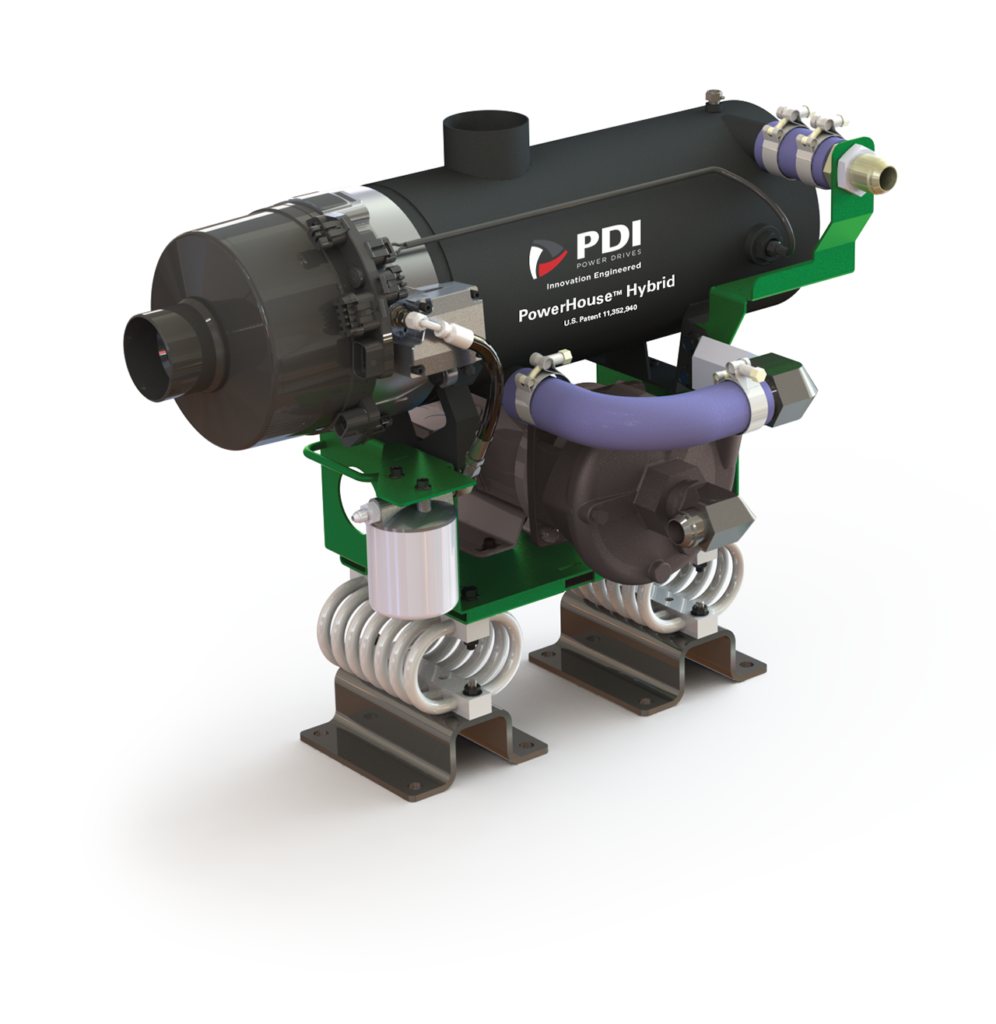
The PowerHouse™ Hybrid from PDI heats fluids without an additional engine or APU—completely eliminating the engine as part of the heating unit. (PDI Photograph)
The PowerHouse™ idle reduction system from PDI helps railroads and rebuilders shut down locomotives to reduce fuel usage, emissions, maintenance and noise pollution even during the winter months. The company tells Railway Age that the system “heats engine oil and circulates heated coolant through the locomotive engine block and cooling system to maintain fluid temperatures above 100°F, via a diesel-fired heating unit.”
The PowerHouse™ Hybrid heats fluids without an additional engine or APU—eliminating the engine as part of the heating unit. It powers itself directly from the locomotive battery bank for up to seven days without starting the engine, according to PDI. When plugged into an external 120 VAC power source, the Hybrid heats the fluids while charging the locomotive batteries; it does not require access to three-phase power. Additionally, the Hybrid requires, on average, less than 5 amps to power a diesel-fired burner to keep coolant and oil warm while the locomotive is shut down. It also monitors locomotive coolant system and battery health, sending warnings via text message to railroad personnel. PDI reports that a rail customer in 2022 installed 50 units, recording fuel savings of more than $1.5 million between October 2022 and April 2023.
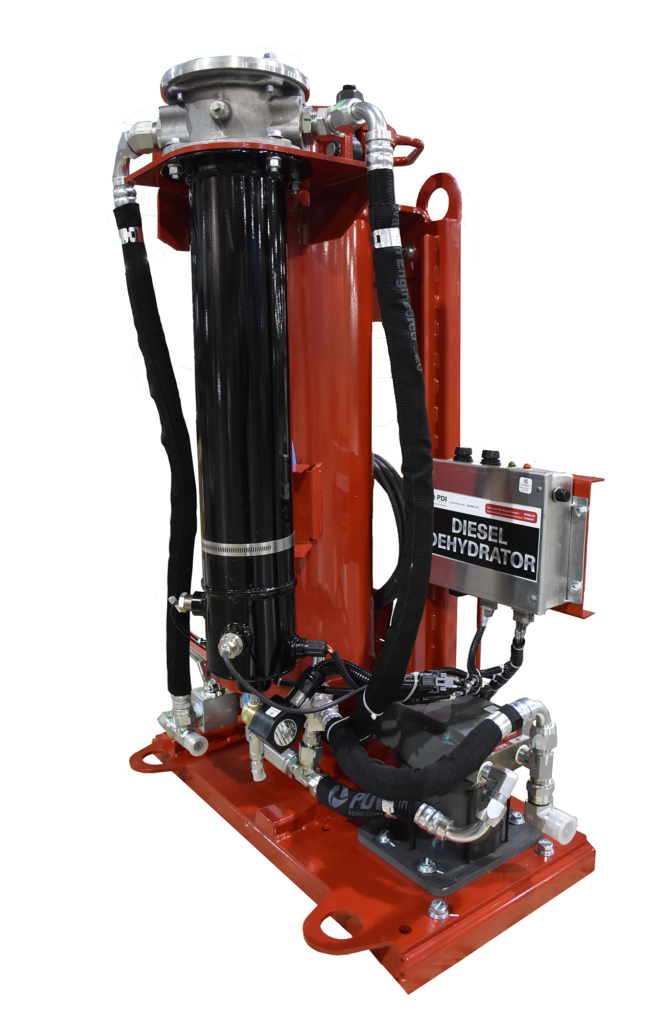
PDI recently developed a compressed air water separator, a drop-in solution that works with standard locomotive air dryers to remove water for proper locomotive function. The company’s Diesel Dehydrator™ also removes water, and it filters particulates from diesel fuel. After a locomotive rebuilder installed the system for a railroad customer that was experiencing issues due to high-water content in fuel, the Diesel Dehydrator removed 99.5% of that water, increased the fuel injector lifespan by four, and boosted overall locomotive performance, according to PDI.
Progress Rail, a Caterpillar Company
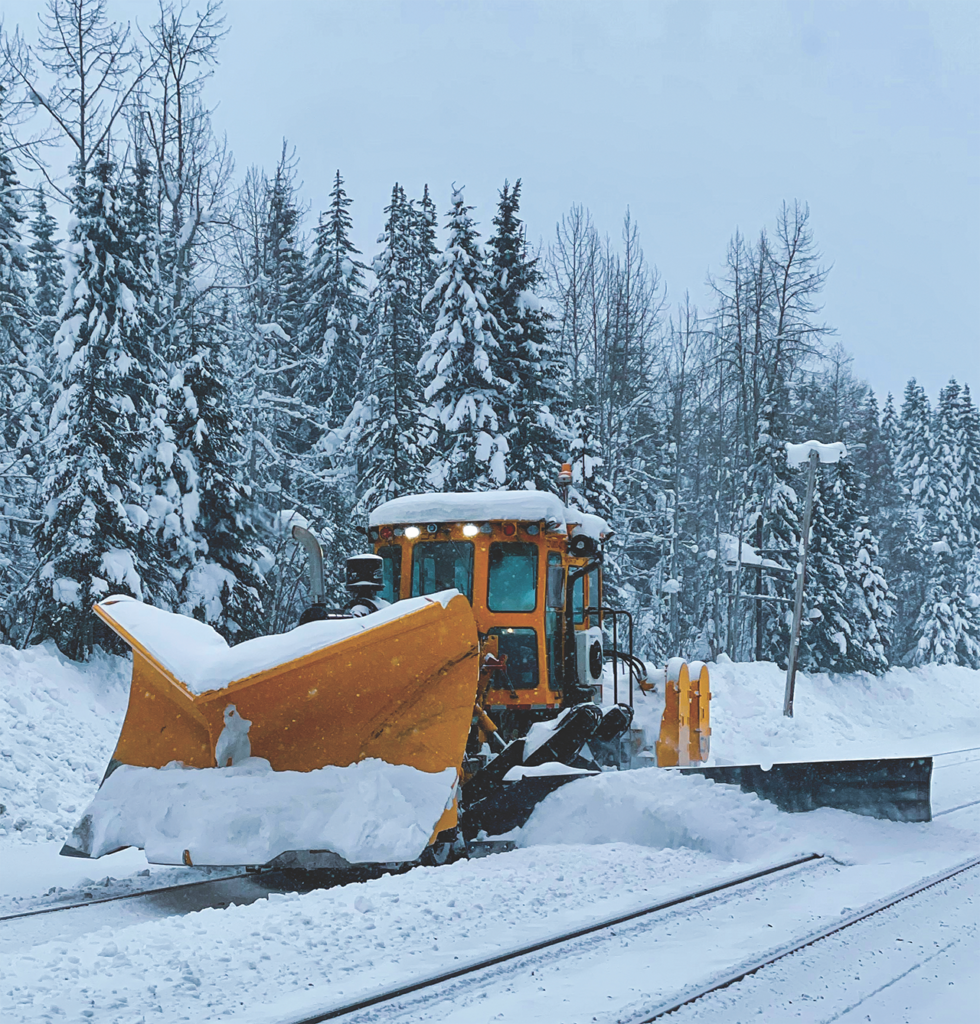
Progress Rail offers a range of products to help keep customers productive during the winter months. The Kershaw® Model 60 is a multi-purpose platform that can be used as a heavy-duty snow fighter or as a ballast regulator or brush cutter. The company tells Railway Age that it is redesigning all its machines to eliminate pneumatic systems where possible, which in turn, eliminates the frustration and downtime associated with frozen air systems.
Progress Rail’s EMD® AESS™ for locomotives is a “fully integrated software solution that monitors critical operating parameters during locomotive idle operation—safely and effectively shutting down the engine when all factors are satisfied,” the company says. A rail conditioner system called the Rail Blaster uses compressed air to blow snow off the rails to improve tractive effort in winter weather conditions.
Customers continue to demand more value for their money, increased productivity and reliability, and fuel savings, the company reports. Additionally, they are “eager to embrace more sustainable and advanced rail technology solutions, connecting their assets to back-office solutions.” Progress Rail’s Uptime™ suite of products is an example. It serves as a “next-generation” analytics platform to monitor locomotives and fleets. “The cloud-based portal monitors locomotive faults and operating parameters in real-time, providing diagnostics, prognostics and repair recommendations to prevent faults from destabilizing operations,” Progress Rail says. It explains that Uptime Cloud pulls and consolidates data into categories, such as asset vitals, model and type, individual and fleet history, weather, and geography. The use of Uptime Analytics “helps shops fix locomotives the first time they enter, leading to fewer repeat shoppings and fewer unnecessary shoppings,” according to Progress Rail. “The target repair and troubleshooting guides from Uptime Analytics focus the repair work to the source of the problem, decreasing shop cycle times. User feedback and repair closeouts facilitate machine learning, allowing Uptime Analytics to continuously improve. All of this leads to improved availability of locomotives.”
Railway Equipment Company (RECo)
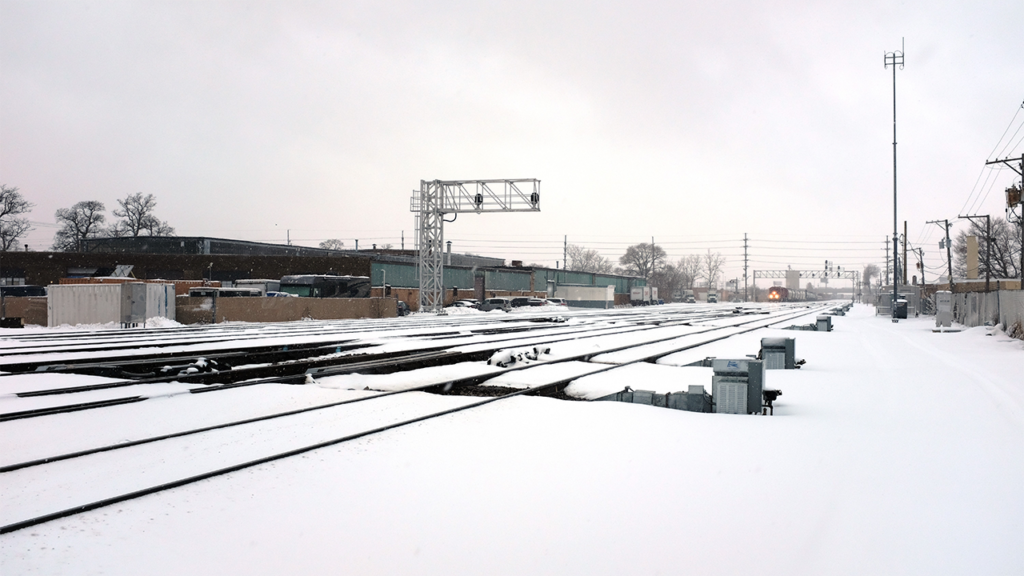
RECo offers a variety of winter protection products, including its popular Gas Hot Air Blowers. Units range from 400,000 BTU to 900,000 BTU with airflow rates up to 3,600 CFH. The use of sensors allows them to run only when all parameters set by the railroad have been satisfied, i.e., ambient temperature and moisture, according to the company. All units include a control module, which has LED indications that illuminate when a fault is detected. With remote monitoring, railroad personnel can determine the fault prior to arriving on site.
RECo also offers 922 cal-rod switch heaters with controllers, as well as cold air blowers.
The company tells Railway Age it has officially introduced the GHAB/EHAB Combo Unit. Classified as a redundant switch clearing device, the heater runs as an electric melter to maintain the switch and the gas kicks on once the ambient air temperature dips below a set point, RECo says. Also new are Hot Box Detector Winter Protection Packages to ensure scanners are kept clear of ice and snow during the winter months.
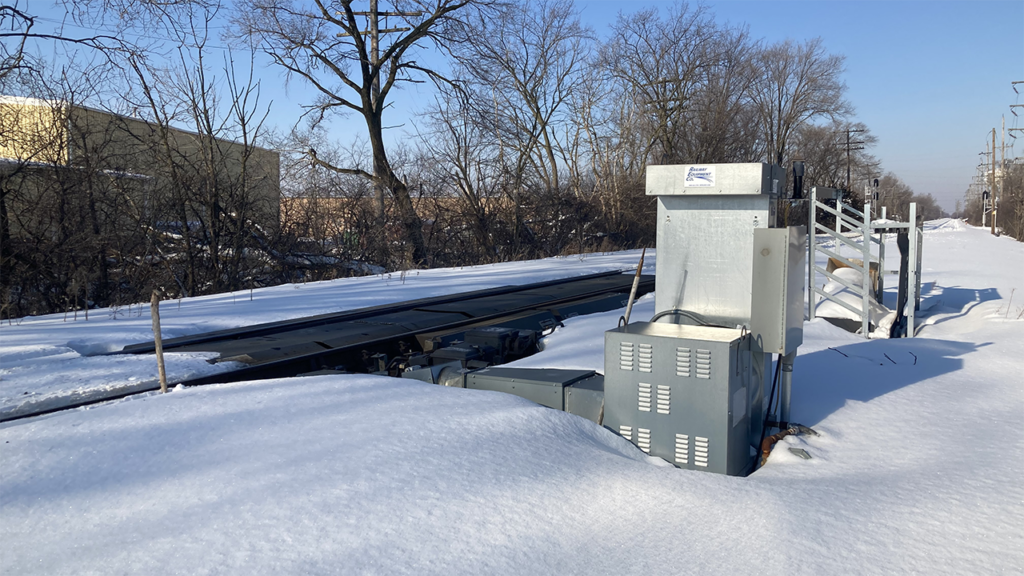
RECo’s energy-efficient induction heating solution is officially in the testing phase. It will be installed at pilot locations this fall, with an anticipated production date of spring 2024.
As winter approaches, the company recommends that railroads inspect all switch heaters, particularly all duct work to ensure there is no debris and there is a clear path for airflow.
“Although we are seeing improvements within the supply chain, lead times are still longer than usual,” the company reports. “We recommend that our customers start looking at their spare parts inventory to ensure that they have everything they will require for this upcoming season as soon as possible.”
Spectrum Inc., a Division of Aspeq Heating Group
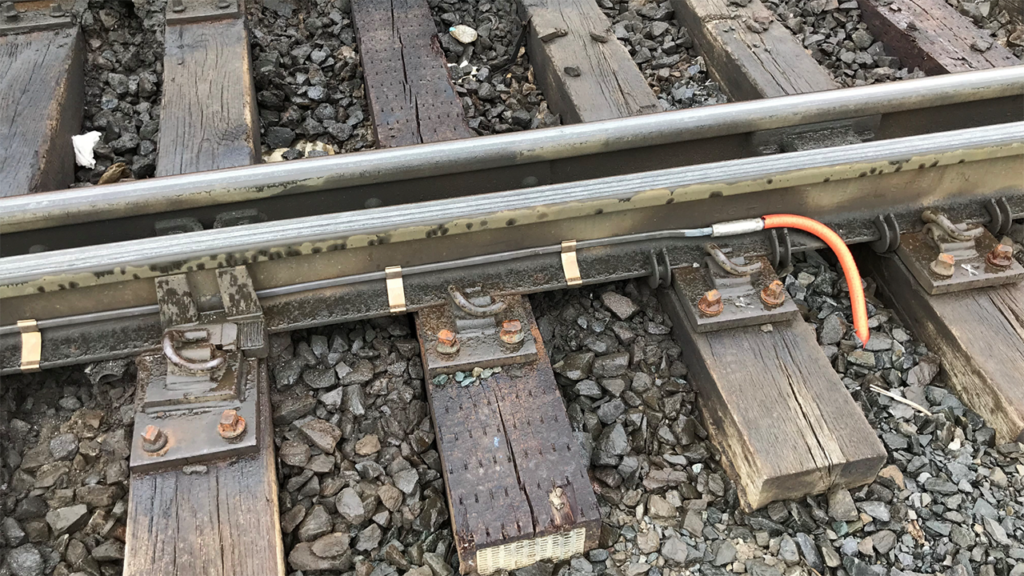
Customers today seek more energy-efficient, economical and low-maintenance products, according to Glen Baker, Director of Sales, Railroad Division. That’s why the company offers electric heating products for the railroad market. These include track heaters, crib heaters and hot air blowers. “We not only offer the most rugged flat electric track heaters and crib heaters, but also manufacture two sizes of our electric hot air blower units, using 3 hp and 5 hp,” he says. The manufacturer’s flat track heaters and crib heaters, he adds, are available for immediate delivery.
Spectrum continues to improve its manufacturing process “to keep costs in line and guarantee a quality product that will last in the most rugged applications,” Baker tells Railway Age. He points out that the company’s products must meet stringent testing standards prior to shipping. Flat jacket and crib heaters, for example, must pass electrical tests, including meg check; dielectric tests (Hy-pot); wattage checks; hydro tests (the flat jacket heater and all leads are fully submerged in a pressurized water tank at 60 psi for 60 minutes); hot and cold spot checks in heaters; and dimensional checks (diameter and length). Certification is available according to AAR standards.
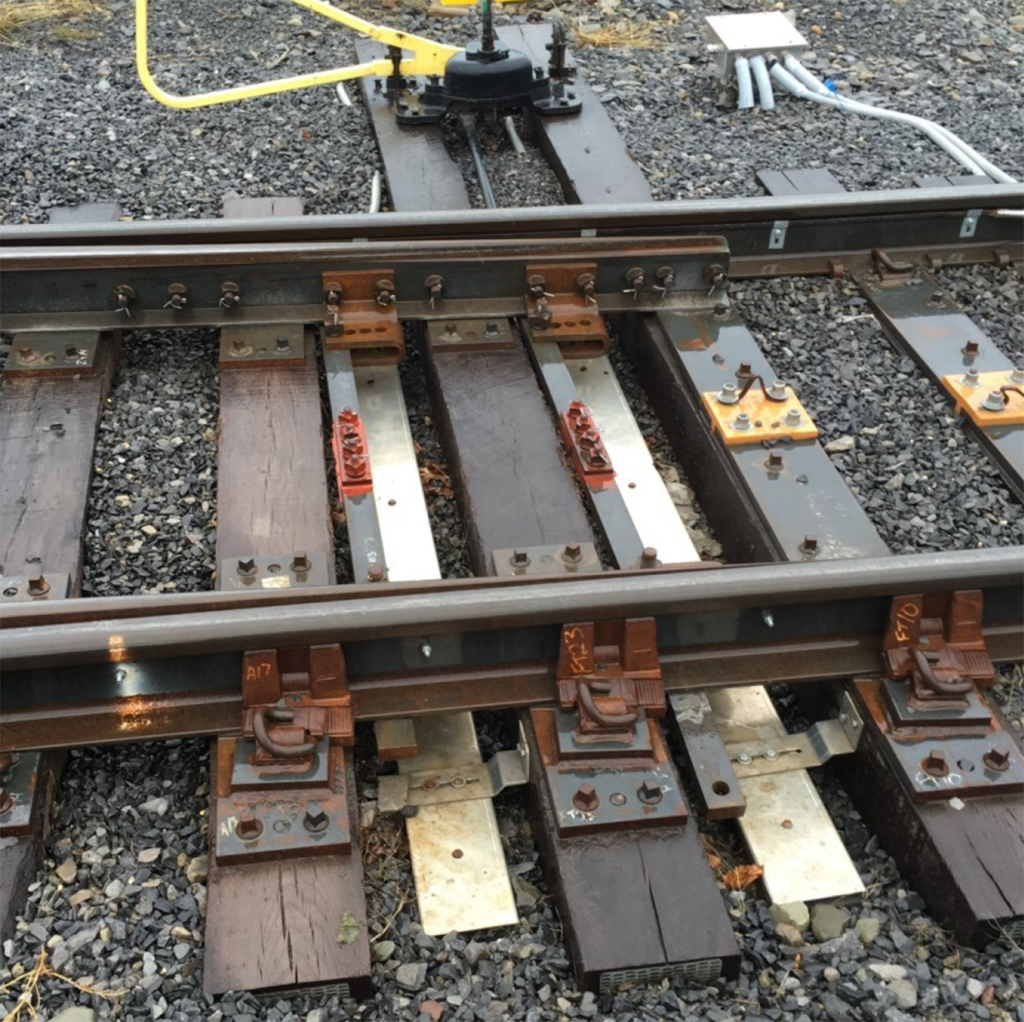
A prototype hot air blower is slated for testing this winter. “The 65 kw hot air blower has a new heater design and upgraded blower capabilities,” Baker says. “This unit will produce more heat and generate increased levels of air flow to better push and melt snow at the points and further down the switch.”
Also in development are insulation kits for increasing the heat level on the rail when using calrod track heaters. “We have tested this product in the field and in enviro-chambers at 0-10 degrees F,” Baker reports. “Our tests show an increase of 45-60 degrees F on the rail head when using insulation with the element. This opens up the option of using lesser wattage elements to achieve the same heating temperatures, thus saving energy. We will be rolling out this new product later this summer.”
ThermOmegaTech

Leaving a locomotive engine running guarantees the water-cooling system won’t freeze in winter, but the result is fuel waste and increased air pollution. A more efficient option is to install ThermOmegaTech’s freeze protection valve into the passenger railcar or locomotive’s cooling system to drain the system if the engine coolant temperature drops close to freezing, according to Bridget Sexton, Product Manager-Railroad Division for ThermOmegaTech, which offers a thermostatically controlled valve called the GURU® Plug.
When re-setting the GURU®, the supplier says it’s important to melt any ice formations on the cartridge and inside the hex body to prevent seal damage. “Over time the hex nut wears and that damage could lead to problems,” Sexton explains. “We recommend replacing the hex nut as well as the cartridge for maximum performance, along with ensuring the hex nut seat is cleaned before reinserting.”
ThermOmegaTech also offers the GURU® Flag and Clip or GURU® Flag and Key tools to prevent the GURU Plug from triggering open by the cold water during the refill process, Sexton says. The flag serves as a refilling indicator.
ThermOmegaTech recently introduced the Anti Tamper Cap that requires a key to reset rather than the company’s traditional cap that requires a clip. Also new is the addition of color to the company’s hex nut that matches the cap color. The change, Sexton tells Railway Age, will help users identify the age of the hex nut to ensure the nut is replaced with the cartridge. Sept. 1 will mark the transition date going forward for shipping the season’s new color cap and hex nut.
Thermon
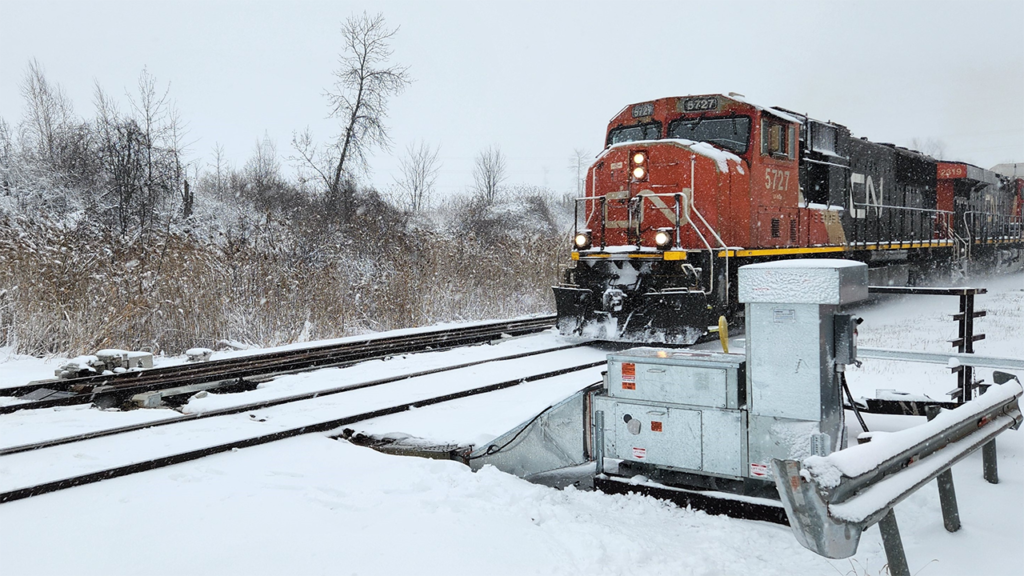
Thermon’s snow-clearing devices for switches and wayside inspection systems help ensure the reliable movement of trains during the winter months, Rail Products Technical Manager Gregor Harris tells Railway Age. Selection of the appropriate system—whether electric element, hot air or high velocity ambient air—is dependent on weather conditions, power availability and space limitations, he says.
Recently, a new light rail transit project selected in-gage switch machines that did not allow for conventional heater track ducts. “Our solution included field-side track ducts to direct hot air from the outside in,” Harris reports.
Thermon’s new Fastrax HCP series control panel for electric element heating is now consistent with the operating logic and ArcticSense snow detection components used in all its products, Harris says. “This facilitates standardized operating practices and reduces spare parts inventory,” he explains.
Due to the Hellfire Blizzard Duty 905’s success, Harris reports, the company has dedicated a new manufacturing facility in San Marcos, Tex., to triple production capacity of the Hellfire product line. The next generation Hellfire is currently in development and will be in service at select locations this winter, he says. “This evolution of the Hellfire will provide a user-friendly interface as well as the ability to connect to a variety of wayside data collection devices.”
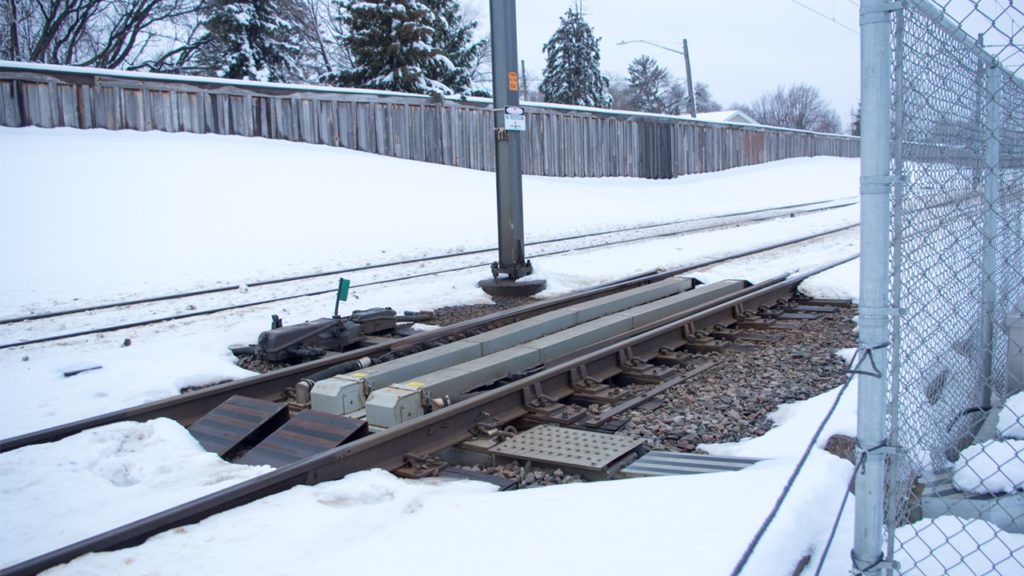
Close collaboration with the railroads, along with resolved supply chain issues, essentially allows the company to follow a “build-to-stock model,” Harris tells Railway Age. This ensures “we have the right products available at the right time.”
Wabtec
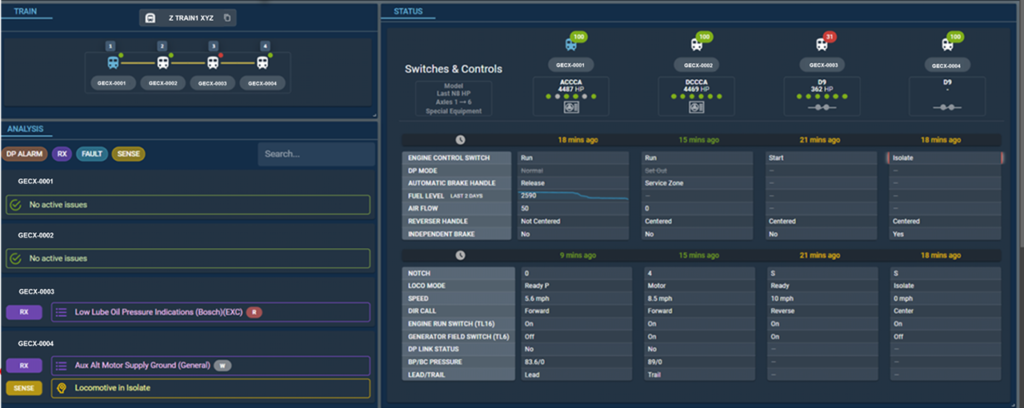
Wabtec’s Train Analysis Tool is helping railroads identify and resolve issues within the power consist. According to Vice President-Product Management Chad Thompson, the tool remotely collects data from all locomotives in a power consist and uses analytics to identify the root cause of issues impacting the consist’s propulsion and braking performance. The results and feedback on issue resolution are presented to a railroad’s mechanical department, he says.
“To accelerate identifying frozen blowdown valves, for example, Wabtec incorporated analytics in the Train Analysis Tool to provide a ‘Sense’ [or alert] when it detects a possible frozen blowdown valve,” Thompson says. “This new ‘Sense’ is expected to have a significant impact for railroads during the upcoming winter season.”
Wabtec also offers Advanced Rail Cleaner to improve adhesion and related tractive effort, Traction Antilock Braking System, and sub-freezing AESS.
Thompson reports that Wabtec works with customers to evaluate commonly used winter components and performs an analysis yearly. The supplier also adjusts inventory levels for the winter season to ensure equipment is available when customers need it.



